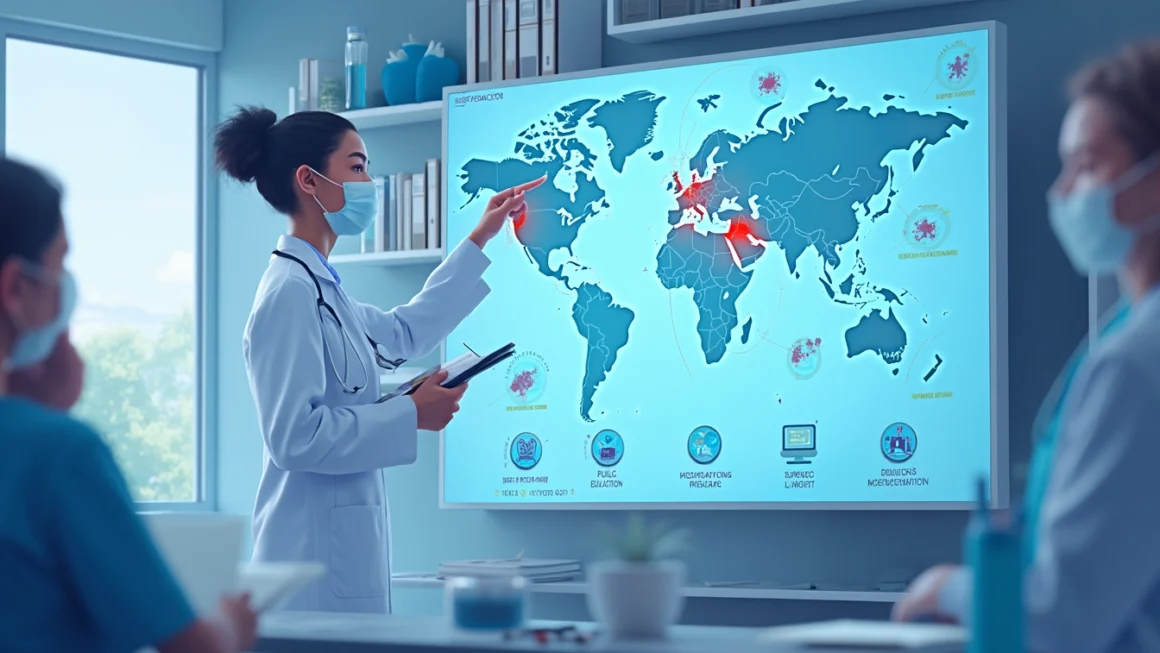Emerging Infectious Diseases: Understanding the Threats
Table of Contents
In today’s interconnected world, the rapid spread of infectious diseases poses a significant challenge to global health. The World Health Organization (WHO) has recently highlighted several emerging infectious diseases that demand our attention. This blog post delves into these threats, providing insights into their origins, transmission, and the necessary precautions to combat them.
The Growing Concern of Infectious Diseases
Emerging infectious diseases are infections that have newly appeared in a population or have existed but are rapidly increasing in incidence or geographic range. The WHO has been at the forefront of monitoring and addressing these diseases, ensuring timely updates and responses to prevent widespread outbreaks.
What Are Emerging Infectious Diseases?
Emerging infectious diseases are often caused by pathogens that have evolved or adapted to infect new hosts, or by existing pathogens that have become more virulent. These diseases can result from zoonotic transmissions, where diseases are transferred from animals to humans, or from changes in the environment that facilitate the spread of pathogens.
Recent Alerts from the WHO
The WHO’s recent alerts have highlighted specific diseases that are currently under surveillance due to their potential impact on global health. Understanding these diseases is crucial for taking preventive measures and mitigating their spread.
Lassa Fever Outbreak
Lassa fever, an acute viral hemorrhagic illness, has been identified as a significant threat. It is caused by the Lassa virus, primarily transmitted through contact with food or household items contaminated with rodent urine or feces. Person-to-person transmission can also occur, particularly in healthcare settings in the absence of adequate infection control measures.
- Symptoms: The disease can cause fever, facial swelling, muscle fatigue, and in severe cases, bleeding from the mouth, nose, or gastrointestinal tract.
- Prevention: Reducing rodent populations, practicing good hygiene, and using protective equipment in healthcare settings are essential measures to prevent the spread of Lassa fever.
MERS-CoV: A Respiratory Threat
The Middle East Respiratory Syndrome Coronavirus (MERS-CoV) remains a concern due to its high mortality rate and potential for causing severe respiratory illness. This virus is primarily transmitted from camels to humans, and from person to person, especially in healthcare settings.
- Symptoms: MERS-CoV can cause fever, cough, and shortness of breath. In severe cases, it can lead to pneumonia and kidney failure.
- Prevention: Avoiding contact with camels, adhering to hygiene practices, and implementing strict infection control measures in hospitals is critical to preventing MERS-CoV transmission.
Global Preparedness and Response
To effectively combat these emerging infectious diseases, global preparedness and response strategies are paramount. The WHO collaborates with countries to enhance their capacity to detect, report, and respond to health threats.
Strengthening Surveillance Systems
Building robust surveillance systems enables the early detection of disease outbreaks. Countries are encouraged to develop and maintain systems that can rapidly identify and track infectious disease cases, ensuring a swift response to contain outbreaks.
Promoting Research and Development
Investment in research and development is crucial for understanding emerging pathogens and developing effective treatments and vaccines. Collaborative efforts between governments, research institutions, and the private sector are essential for advancing our knowledge and preparedness.
Community Engagement and Education
Community engagement is key to controlling the spread of infectious diseases. Educating the public about the risks, symptoms, and preventive measures helps in fostering a proactive approach to health. Encouraging people to seek medical attention early and adhere to public health guidelines can significantly reduce the impact of disease outbreaks.
International Collaboration
The significance of international collaboration cannot be overstated. Countries must work together, share information, and support each other in responding to infectious disease threats. Joint exercises, sharing best practices, and providing technical assistance are vital components of a coordinated global response.
Conclusion
The threat of emerging infectious diseases is a global challenge that requires a concerted effort from all sectors of society. By understanding the nature of these diseases, strengthening surveillance systems, investing in research, engaging communities, and fostering international collaboration, we can effectively mitigate the risks and protect public health. Stay informed, practice good hygiene, and support global health initiatives to contribute to a safer, healthier world.
For more information about software development and how technology can assist in global health efforts, be sure to visit this impressive portfolio site.




